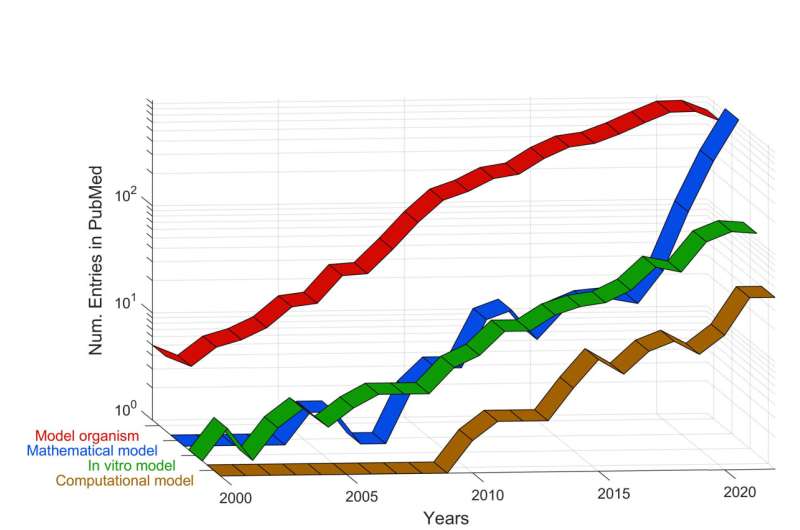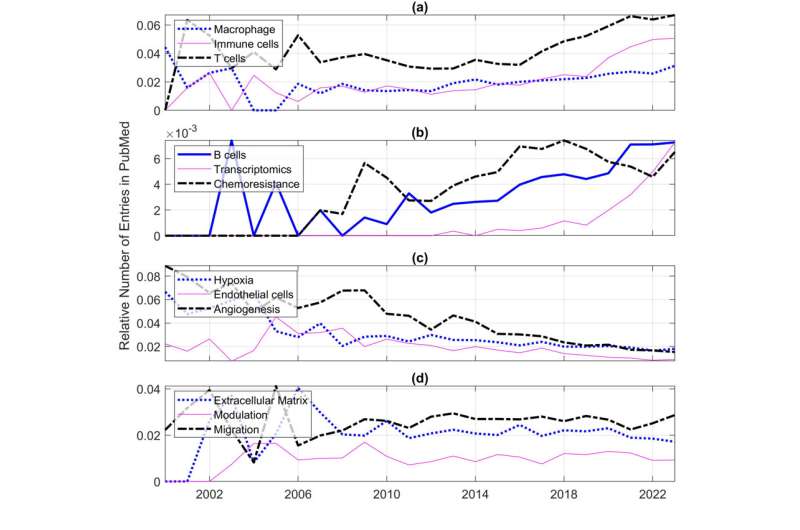This article has been reviewed according to Science X's editorial process and policies. Editors have highlighted the following attributes while ensuring the content's credibility:
fact-checked
peer-reviewed publication
trusted source
proofread
New study categorizes and examines four different types of model related to cancerous tumors

The term model is employed quite widely in science and technology.
Researchers in disciplines such as biology, computing, engineering and mathematics each have their own understanding and meaning of what a model is meant to be.
In a paper published in the journal Cancers, City, University of London Biomedical Imaging academic, Dr. Constantino Carlos Reyes Aldasoro, reviews the use of the word model as it relates to cancer research and the specific area of the microenvironment surrounding a cancer tumor.
He then groups different definitions of model into four categories: model organisms, in vitro models, mathematical models and computational models, and explores what is meant in each case, looking at the advantages and disadvantages of the different models presented.
Next, Dr. Reyes Aldasoro carries out a quantitative investigation of the scientific publications listed in the database of the United States National Library of Medicine by counting the frequency in the use of these terms, as well as the components of the microenvironments and the organs modeled with these techniques.
In his conclusion, Dr. Reyes Aldasoro makes the point that while 'model organism' has been the most common setting for investigations of the tumor environment, there has been a marginal decrease in the numbers of this description in recent years as tracked by PubMed.
In his analysis over the past two years, in vitro models have also shown a slowdown.

However, he makes the case that "the number of entries using mathematical models grew steadily and are now as common as the number of entries for in vivo models. The use of computational models also grew, especially agent-based models and convolutional neural networks. It will be interesting to see how these trends continue in the near future."
Dr. Reyes Aldasoro goes on to observe that "the basic idea behind the models here described is that these constitute a simplified, idealized and more accessible representation of something more complex and hard to observe, in this case the tumor microenvironment."
"While it should always be well understood that no model is a perfect representation of reality, a good model should capture some essential characteristics of the microenvironment and permit successful experimentation from which observations can be translated to patient treatment or care. It should always be considered that not everyone understands models in the same way; thus, it is important to make an effort to use these terms in ways that avoid confusion, if possible."
"For instance, when talking about deep learning, the term 'architecture' could be used instead of model."
Dr. Reyes Aldasoro suggests that adding the word "organism" in cases of animal models might also be of assistance, for example: "the mouse has become the favorite mammalian model organism." Similarly, in mathematical cases, the specification of a risk model or a mechanistic-model and not just a model would improve clarity.
Biologically and clinically, there are still many unanswered questions related to the tumor microenvironment and all its components. Interdisciplinary research related to the microenvironment is growing, and as such, a single study may include, say, in vitro models that are then processed with deep-learning models or histopathology slides that are analyzed with machine-learning models that then feed a prognostic model of survival.
Therefore, a clear understanding of what is meant each time that the word "model" appears in a paper is necessary, and researchers from all sides of the spectrum should bear in mind that not everyone understands the same meaning from "model."
More information: Constantino Carlos Reyes-Aldasoro, Modelling the Tumour Microenvironment, but What Exactly Do We Mean by "Model"?, Cancers (2023). DOI: 10.3390/cancers15153796



















